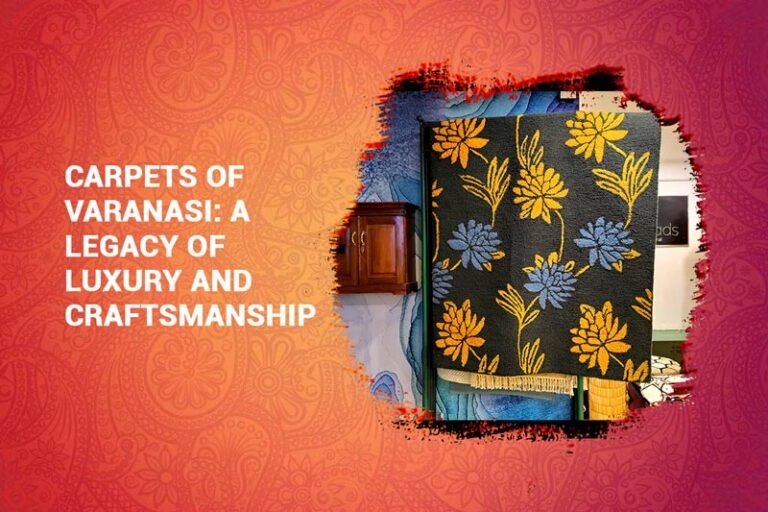Varanasi Hand-Tufted Woollen Carpets are made with high-quality wool obtained from nearby sheep and goats. The wool is spun by hand and colored with either natural or synthetic dyes to create bold hues and soft tones.
Highly trained craftsmen utilize traditional tufting guns to craft detailed designs and patterns on a base of cotton or jute material. Every strand of thread is meticulously woven and fastened, one by one, to construct the pattern, creating a thick and opulent pile that is both plush and long-lasting.
Varanasi Hand-Tufted Woollen Carpets are famous for their varied patterns, influenced by the cultural heritage, architectural motifs, and natural surroundings of the city. Classic designs like flowers, shapes, and borders are frequently mixed with current elements to make carpets that are both ageless and contemporary.
Numerous carpets showcase designs influenced by the famous sights of Varanasi, such as the ghats, temples, and Mughal architecture that characterize the city’s skyline. These patterns not just honor the extensive history of Varanasi but also act as symbols of the city’s deep spiritual and cultural importance. In Varanasi, carpets hold significant value as cherished heirlooms, symbolizing status, prestige, and cultural heritage, and are often passed down from generation to generation. Hand-tufted wool rugs are frequently utilized to decorate residences, religious buildings, and majestic estates, bringing a sense of coziness, sophistication, and opulence to the area.
In addition, the art of making carpets offers job prospects and financial independence to the artisan groups in Varanasi, maintaining age-old techniques and backing incomes in a constantly evolving society.

